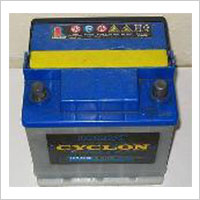
Lead-acid batteries are the environmental success story of our time. More than 97 percent of all battery lead is recycled. Compared to 55% of aluminium soft drink and beer cans, 45% of newspapers, 26% of glass bottles and 26% of tires, lead-acid batteries top the list of the most highly recycled consumer product.
The lead-acid battery gains its environmental edge from its closed-loop life cycle. The typical new lead-acid battery contains 60 to 80 percent recycled lead and plastic. When a spent battery is collected, it is sent to a permitted recycler where, under strict environmental regulations, the lead and plastic are reclaimed and sent to a new battery manufacturer.
The recycling cycle goes on indefinitely. That means the lead and plastic in the lead-acid battery in your car, truck, boat or motorcycle have been – and will continue to be — recycled many, many times. This makes lead-acid battery disposal extremely successful from both environmental and cost perspectives.
Each battery contains about 20lbs of lead, 1 gallon of Sulphuric Acid and 2lbs of plastics. Due to the unusual properties in lead it can be recycled again and again fairly easily. Lead batteries are taken to a special treatment facility where there are all crushed. Everything apart from Uranium floats on lead, the Sulphuric Acid and plastics are easily separated. Then the lead is heated in furnaces to remove any impurities and again because everything floats on the top of lead, these are easily removed also. The resulting molten liquid is then cast in blocks and sent back to battery manufactures to make new batteries. This process can be done time and time again making Lead-Acid batteries our environmental successes.
